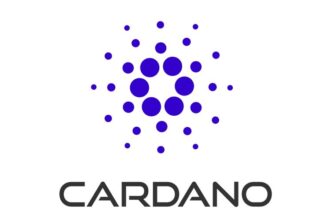A Crypto Mining Machine—also known as a mining rig or ASIC miner—is a purpose-built hardware device designed to perform intense cryptographic calculations via Proof‑of‑Work (PoW) to validate transactions and secure blockchain networks. These specialized machines include Application‑Specific Integrated Circuits (ASICs) or GPU clusters. ASICs are tailor‑made to solve hashing puzzles at lightning speed and are far more efficient than standard CPUs or GPUs.
Importance of Hash Rate & Energy Efficiency
Two critical performance metrics for a Crypto Mining Machine are:
Hash Rate (TH/s): Measures how many attempts the machine makes per second to find the correct block solution. Examples from 2025 include the Antminer S21 Hyd (~335 TH/s) and Whatsminer M60S (~170–186 TH/s).
Energy Efficiency (J/TH): Indicates the joules of energy consumed per terahash. The Antminer S21 Hyd is around 16 J/TH—making it one of the most efficient and cost-effective rigs available.
Higher hash rates lead to more consistent mining rewards, while energy efficiency reduces ongoing electricity expenses, the single biggest cost in any mining operation.
Key Players & Global Market Overview
The global crypto mining market was valued at approximately USD 14.4 billion in 2024, projected to grow to USD 14.81 billion in 2025, reaching USD 18.47 billion by 2033 (CAGR 2.8%).
Major manufacturers include Bitmain (Antminer), MicroBT (Whatsminer), and Canaan (Avalon).
ASIC hardware market alone was close to USD 12.9 billion in 2024 and forecasts to reach USD 30.8 billion by 2033 (CAGR ~10.3%).
Top Crypto Mining Machines in 2025
| Model | Hash Rate | Efficiency | Highlights |
| Antminer S21 Hyd | 335 TH/s | ~16 J/TH | Hydrocooling, high reliability |
| Whatsminer M60S | 170–186 TH/s | ~18.5 J/TH | Proven uptime and integration |
| Avalon A1366 | 130 TH/s | 25 J/TH | User-friendly setup, cost-effective |
| Antminer S19 XP Hyd | 255 TH/s | ~20.8 J/TH | Liquid-cooled variant of proven series |
| Sealminer A2 (Bitdeer) | 226 TH/s | 16.5 J/TH | Enterprise-level operations focus |
These models strike a balance between raw hash power, energy efficiency, and long-term reliability—essential aspects for both solo and farm-based Crypto Mining Machine setups.
Building & Running a Mining Rig
1. Hardware & Setup
Mining Machine: Choose between ASIC models like Antminer or Whatsminer, or GPU rigs for altcoins.
Site & Power: Opt for regions with low electricity rates—industrial-scale farms often exist in areas with renewable power.
Cooling Systems: Hydrocooling, immersion, or air cooling help maintain performance and extend component life.
2. Mining Software & Pools
Use mining software (e.g., CGMiner, BFGMiner) compatible with your hardware.
Joining a mining pool increases earnings consistency by pooling hash power—especially important as PoW difficulty escalates.
3. Maintenance & Monitoring
Regular firmware updates and dust-cleaning are essential.
Monitor hash rate, power consumption, and hardware temperature daily.
Consider real-time dashboards and cloud-based management tools.
Profitability Factors & ROI
Profit margins depend on:
Hardware investment: Cost of purchasing a Crypto Mining Machine.
Electricity cost: Often the dominant operational expense.
Bitcoin price and network difficulty: Rewards fluctuate based on market conditions.
Efficiency: Machines with <20 J/TH yield higher returns due to lower running costs.
Operational scale: Bulk deployment reduces per-machine overhead, improving ROI.
Many miners use calculators factoring in device specs, pricing, electricity and pool fees to estimate profitability.
Environmental & Energy Concerns
Bitcoin mining consumes massive energy—up to 2% of US electricity in 2024.
Machine e-waste is generated as hardware becomes obsolete in 1–5 years.
Increasing trend toward renewable energy usage, especially at U.S. mining farms (nearly 40%).
Cooling and noise pollution—documented in communities like Granbury, TX—highlight real-world impact of large Crypto Mining Machine operations.
Emerging Innovations & Trends
AI & High‑Performance Computing (HPC): Some miners are repurposing excess hash power for AI arbitrage or data tasks—potentially generating $37B net value by 2027.
Quantum mining research: Early-stage studies indicate quantum tech may significantly cut energy use in future miners.
PoW vs. PoS shift: Networks like Ethereum are moving to Proof‑of‑Stake, reducing reliance on ASIC/GPU rigs and impacting which Crypto Mining Machine types are viable.
Conclusion: Future of the Crypto Mining Machine
The Crypto Mining Machine landscape in 2025 is a dynamic interplay of powerful ASIC hardware, energy management, and operational scale. Top-tier machines like Antminer S21 Hyd and Whatsminer M60S deliver exceptional hash rate per watt. Success hinges on sourcing low-cost electricity, robust cooling systems, and strategic pool participation. Yet challenges remain: rising energy consumption, environmental implications, and shifting consensus mechanisms demand adaptability and innovation. As technologies blend—AI usage, quantum advancements, and green energy partnerships—the next generation of Crypto Mining Machines may redefine the field for miners worldwide.
Also Read: TRUMP Memecoin Generates $172M for Crypto Exchanges: Report












